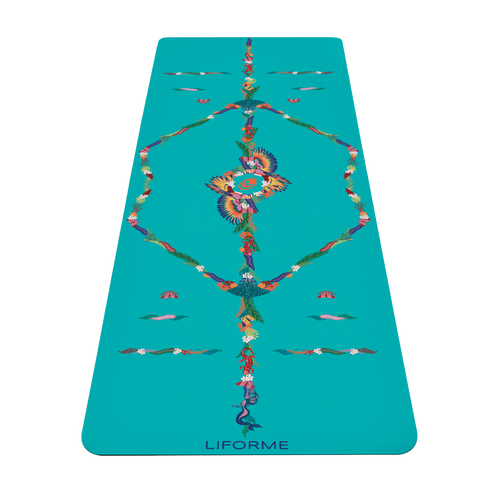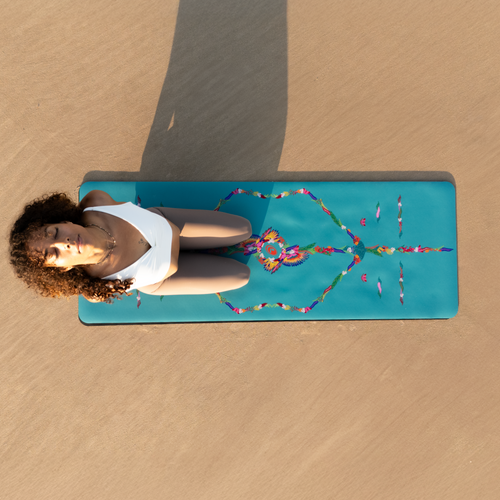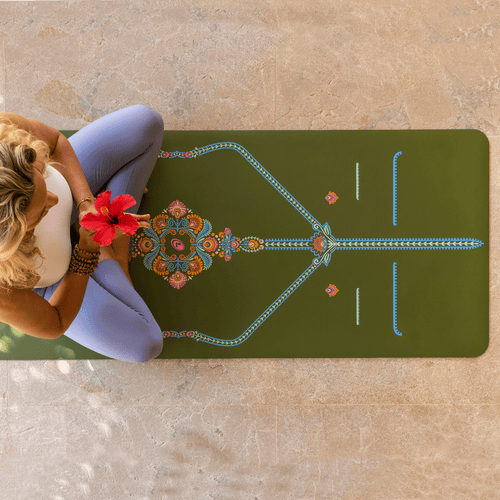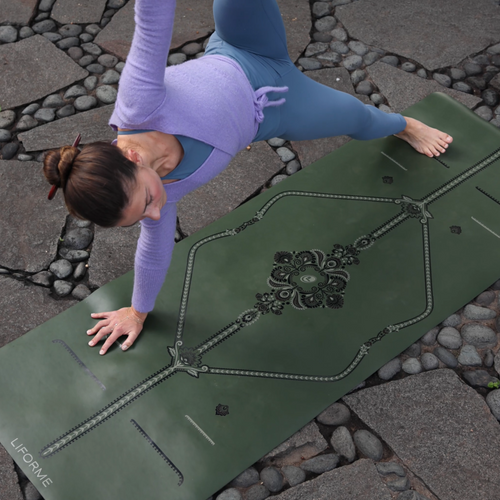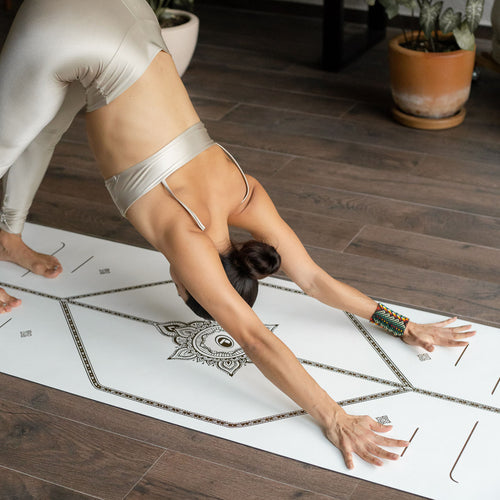If you Google “Yoga for Anxiety” (which may be how you ended up here), you get a lot of lists advising you to practice a particular nine or twelve poses. While there’s absolutely nothing wrong with doing those poses, that’s not really how the mental health benefits of yoga work. We know which poses to recommend if you want to stretch the back of your leg, but your brain is not the same as your hamstring.
This is both the bad news and the good news.
The bad news is that yoga is not a quick fix for your anxiety. No nine poses are going to do the trick. The good news is that it doesn’t matter which poses you do. Yoga’s role in anxiety management comes from the cumulative effects of a consistent, long-term commitment to the practice.
So how can yoga help? The method is simple: start doing it as soon as possible and then keep doing it several times a week for the foreseeable future. The more regularly you practice, the better you’ll get to know your body, your mind, and the relationship between them, which opens the doors to many techniques you’ll find useful in coping with anxiety.
8 Ways Yoga Helps Manage Anxiety

Yoga…
1. Provides Tools for Grounding
Grounding is a word that gets used a lot in yoga. It means having a strong connection with the physical body, which can be used to anchor the mind if it starts to spin out. Movement is grounding. So is breathing. Your breath anchors your body in its physicality, taking your focus away from your thoughts and into your body.

2. Focuses on the Present Moment
Yoga makes a practice of noticing your breath. Sometimes we speed it up or slow it down for particular effects, but sometimes it’s enough just to notice it without changing anything. Focusing on movement and breath also allows you to exist in the present moment more easily, which is helpful when anxiety is triggered by worries about what might happen in the future.
3. Improves Body Awareness
Anxiety creates physical symptoms you may not notice unless you are used to tuning in to how it feels to live in your skin. When you’re more aware of your body, you can learn how to counter the physical manifestations of your anxiety by doing things like relaxing tensed muscles and deepening shallow breaths.

4. Awakens a New Sense of Self
Even when sitting for a short meditation, you begin to witness your thoughts without engaging with them. When you experience the activity of your mind as an observer, it becomes clear that you are not your thoughts, which makes it easier to separate from non-productive spirals.
5. Fosters Acceptance
Every time you show up on your mat, you get a lesson in accepting yourself the way you are right now. It doesn’t matter what you did yesterday, what you plan to do tomorrow, what you had for lunch, all that matters is what you are doing right now. This isn’t a lesson that comes easily, but when you get it enough times, it comes.

6. Stops the Chatter
The physicality of asana practice is so intense that it takes all your attention. You often emerge from yoga only to realize that you haven’t had time to think about anything else for an hour. This relief from the constant chatter of the monkey mind is one of the most important benefits of yoga.

7. Promotes Toleration of Discomfort
Every new posture puts you in the position of working with the edges of your own discomfort. Learning to manage this sensation in your body in a low-risk situation is excellent training for the brain.

8. Improves Well-Being
Yoga makes you feel better. Full stop.
What Kind of Yoga Helps with Anxiety?
More good news! It doesn’t matter what kind of yoga you do. Fast, slow, group classes, home practice, any temperature, any method. Yoga comes in a lot of flavours, so you may need to try a few before you find the right one, but there is a type of yoga out there for everyone.

Is Yoga Enough?
Yoga complements many other types of interventions and contributes to a low-stress lifestyle. Therapy and medication are also helpful for many people. If you have anxiety, talk to a health care professional. There are many things you can do to get relief.
What About Pranayama? Chanting? Meditation?
Pranayama breathing exercises can prompt the parasympathetic nervous system to regulate hormonal responses. Research has shown that the vibrations from chanting can stimulate the vagus nerve, which signals the body to relax. Regular meditation is also proven to reduce stress and anxiety. Alongside consistent yoga asana, these practices add to the toolbox you can use to self-regulate.

Anxious About Starting Yoga?
If you are brand new to yoga and you don’t know where to begin, check out our Beginners’ Guide. The more you know ahead of time, the more confident you’ll feel, but you don’t need really need to do anything to prepare before you roll out your mat for the first time in a beginners’ class. Yoga has the potential to help you feel less anxious starting today, so let’s get going!
Read more: Grounding Yoga Sequence to Connect you to the Earth, Home Meditation for Beginners , A Guide to Home Practice for Beginners, 5 Pranayama Breathing Exercises for Beginners, Yoga for Beginners: A Complete Guide












